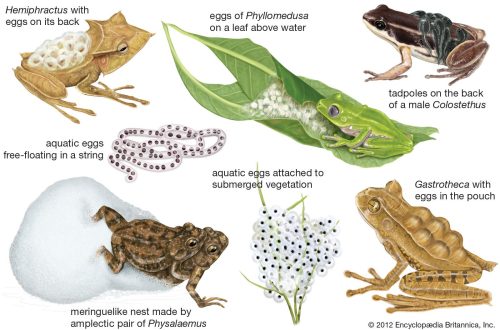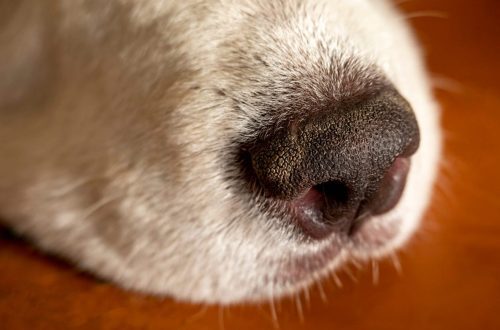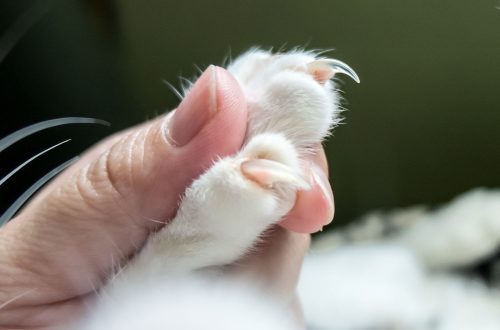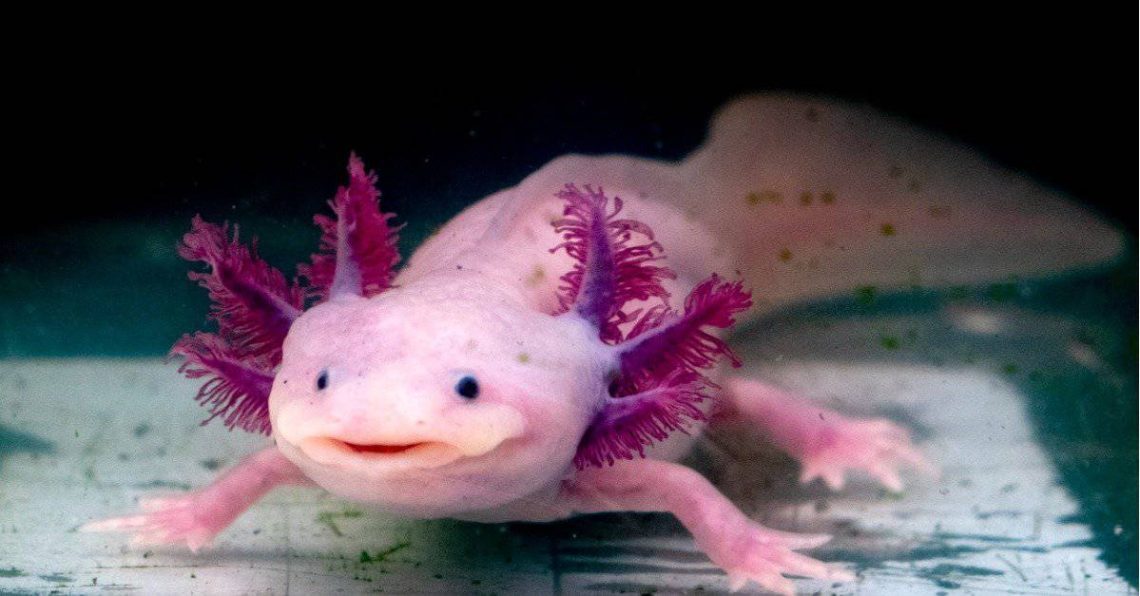
Axolotl. How to keep such an animal?
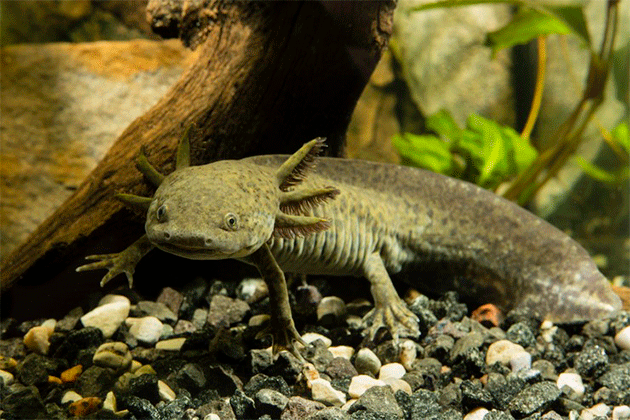
Charming aquarium animals, with a cute face and fringed gills are axolotls. How to keep such an animal – we will tell in the article!
Axolotl (Axolotl) is a neotenic larva of some species of ambistoma. Neoteny – the ability of organisms to reach sexual maturity and reproduce in the larval or early stage of development. Some amphibians, worms, arthropods and mosses and ferns have this ability. Ancient tribes ate axolotls, nowadays catching this amphibian is prohibited – it is listed in the Red Book, and in nature is on the verge of extinction, and most axolotls are kept at home. At home, the axolotls of the Mexican ambystoma (Ambystoma mexicanum) are most often kept, less often – the tiger ambystoma (Ambystoma tigrinum). The axolotl has a rather cute appearance: a large head crowned with three pairs of terry external gills, a wide mouth with small teeth, as if always smiling, small round eyes. The axolotl’s tail is laterally flattened, wide and long, with a fin starting from the middle of the back. The body is covered with smooth skin with vertical grooves on the sides.
The axolotl can breathe with gills and lungs. Another interesting feature of the axolotl is the ability to regenerate lost body parts, such as gills and limbs, even bones grow back with full restoration of functions. The size of an adult axolotl is on average 20-25 cm, rarely grow more than 35 cm.
Axolotls can be of different colors (morph): Wild / Normal – “wild” gray-brown color, Melanistic – deep black, Copper – dark spots on a reddish background, Mosaic – uneven golden spots are scattered on a dark body, Leucistic – white with bright gills , similar to an albino, but with colored eyes, Dirty Leucistic – incomplete pigmentation, randomly located black or brown spots on a white body, Gold Albino – golden yellow bright axolotls with light yellow eyes, and White Albino – white albinos with light eyes and reddish pupil.
Contents
How to keep an axolotl?
When keeping axolotls, it is necessary to take into account some important features of the content that will affect the quality of life and health of this amazing creature.
Temperature and purity of water
The most important points for keeping an axolotl are the temperature and purity of the water. In nature, they live in cold reservoirs, where the average water temperature is kept at around 13-20 degrees and below. It is also necessary to maintain a low water temperature in the aquarium – an increase in temperature above 23-24 degrees is detrimental to the axolotl. To cool the water, you can use both chillers for aquariums – special refrigerators, but they are usually quite expensive, or use cooler units that can cool the water by about 5 degrees, and on hot days additional cooling with ice bottles. When the coolers are turned on, the water evaporates rather quickly; instead, you need to add clean cool water. Water should be clean, water acidity (pH) – 7-8, hardness (dH) – 6-16. You can remove waste from the bottom with a siphon, and regularly – once a week, do water changes (20-30%) for fresh, well-settled water for at least a day.
Aquarium, soil and aquarium equipment
For one adult axolotl, it will take from 40 liters of water, preferably more. The aquarium should be of a horizontal type, be at least 50 cm long for one individual, and have a large bottom area. Also, the aquarium must be equipped with a lid. It is necessary to place an internal or external filter with a compressor in the aquarium. The flow of water and air should not be too strong, you can use a flute nozzle to break the flow or simply direct the jet coming out of the filter onto the wall. It is necessary to clean the filter in a timely manner, as axolotls produce quite a lot of waste. The soil should be smooth, not have any sharp edges, so that the axolotl does not injure the delicate skin, and a rather large fraction, more amphibian mouths, so that it cannot swallow it, as an option, keep it without soil at all. The lamp should not be bright, the axolotl will be much more comfortable in diffused light.
Decorative elements, shelters, plants
Axolotls have poor eyesight and do not like bright light, so it is advisable to install shelters in the aquarium. Decor and shelters in the aquarium should also be free of sharp elements. Large stones, driftwood, ceramic large pots, hollow decor, even plastic pipes can be used as decor and shelters. It is important that in the decor all the holes are larger than the axolotl itself, and it cannot get stuck anywhere. Plants can be planted, but choose not tender plants with a good root system, or set and fasten from directly in pots, as the axolotl is rather clumsy and has poor vision, and can bump into plants. The axolotl does not care if the plant is alive, so artificial plants can also be used, again, without sharp edges and corners, from high-quality materials that do not emit harmful substances into the water.
Is it possible to take an axolotl in your hands?
The temperature of human hands is too hot for the delicate skin of a cold-water axolotl. In case of emergency, hands need to be cooled, but it is better to use a large net for transplanting.
Can you keep an axolotl with other aquarium animals?
It is desirable to keep axolotls in a species aquarium, where only axolotls will be kept. He will eat small fish and shrimps, especially at night. Large inhabitants can already injure the axolotl itself, scratch, bite, active fish pluck the delicate fringe of the gills. Often such a low water temperature is not suitable for other aquarium inhabitants. Axolotls, in addition, are characterized by cannibalism, a large individual is more likely to eat a small one. Therefore, it is necessary that all axolotls living together be approximately the same size.
What to feed the axolotl?
The axolotl is a predator and feeds on animal food. The basis of the diet of domestic axolotls can be chopped seafood (mussels, squids, octopuses), raw (not boiled) shrimp, boneless lean fish fillets, crickets with legs removed, small or chopped earthworms, bloodworms. With the latter, you need to be careful, as the risk of poisoning is high. If the food is inanimate, it can be given with tweezers, preferably with a soft rubber tip, since axolotls have poor vision, react to movement, and grab prey with a sharp jerk. It is undesirable to give chicken meat, beef, and other meat products to axolotls, since they are indigestible for them. Feed an adult axolotl 1-2 times a week. If after feeding there are pieces of food at the bottom, you can remove them with a net or siphon, in order to avoid spoiling the water.
Reproduction of axolotls
Breeding axolotls at home is usually relatively easy. Puberty in larvae occurs closer to one year.
Before breeding, males and females must be separated for several weeks and the temperature of the content should be lowered by several degrees. Producers need to be well fed, after which they are placed in a separate aquarium. After fertilization, she lays eggs. After the eggs have been laid, the spawners need to be removed as they may eat the eggs. For the proper development of eggs, daily water changes are necessary. In addition, all whitened eggs must be removed from the aquarium, in order to avoid damage to the water and damage to the rest of the eggs.
After 14-16 days, after which the first tiny larvae emerge from the eggs. When leaving the egg, the fry have only gills, but no limbs. The hind legs appear in about a week, the front legs in 3-4 months.
For about a week they feed with the help of the yolk sac, later switching to food – “live dust”, and later to small daphnia, cyclops. It is important not to overfeed the juveniles, but also to feed enough so that they grow and develop well. The grown axolotls slowly begin to offer the same food as adults, cut so that he can swallow it. It is necessary to regularly seat the fry as they grow, as cannibalism is common.
With the right content, such an unusual pet, the axolotl, will delight you with health and interesting behavior for 10-15 years.



